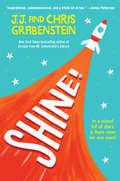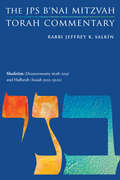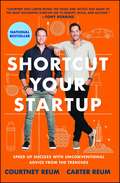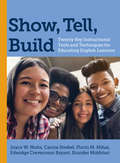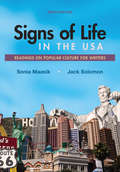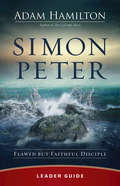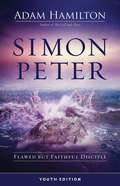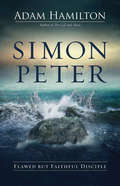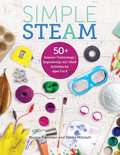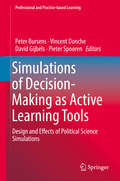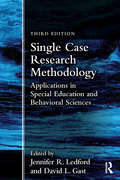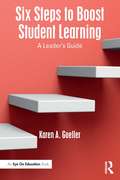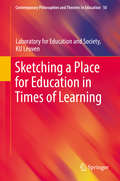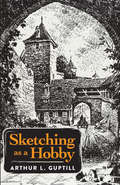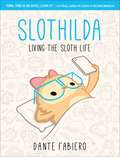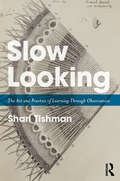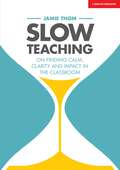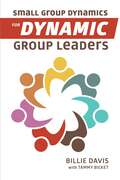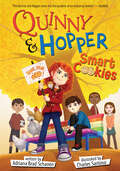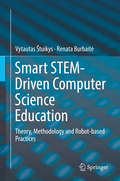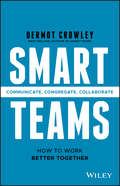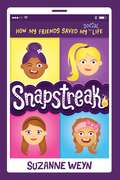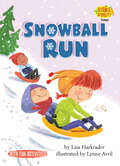- Table View
- List View
Shine!
by Chris Grabenstein J. J. Grabenstein"Inspirational, commonsensical, and a whole lot of fun." --James PattersonEveryone deserves to shine in this sparkling new book from the New York Times bestselling author of Escape from Mr. Lemoncello's Library, Chris Grabenstein, and coauthor J.J. Grabenstein--just right for fans of Word of Mouse and The Fourteenth Goldfish. "Who do you want to be?" asks Mr. Van Deusen. "And not when you grow up. Right here, right now." Shine on! might be the catchphrase of twelve-year-old Piper's hero--astronaut, astronomer, and television host Nellie Dumont Frisse--but Piper knows the truth: some people are born to shine, and she's just not one of them. That fact has never been clearer than now, since her dad's new job has landed them both at Chumley Prep, a posh private school where everyone seems to be the best at something and where Piper definitely doesn't fit in. Bursting with humor, heart, science, possibilities, and big questions, Shine! is a story about finding your place in the universe--a story about figuring out who you are and who you want to be.
Shofetim: The JPS B'nai Mitzvah Torah Commentary (JPS Study Bible)
by Rabbi Jeffrey K. SalkinThe JPS B’nai Mitzvah Torah Commentary shows teens in their own language how Torah addresses the issues in their world. The conversational tone is inviting and dignified, concise and substantial, direct and informative. Each pamphlet includes a general introduction, two model divrei Torah on the weekly Torah portion, and one model davar Torah on the weekly Haftarah portion. Jewish learning—for young people and adults—will never be the same. The complete set of weekly portions is available in Rabbi Jeffrey K. Salkin’s book The JPS B’nai Mitzvah Torah Commentary (JPS, 2017).
Shortcut Your Startup: Speed Up Success with Unconventional Advice from the Trenches
by Courtney Reum Carter ReumFrom the Reum brothers—former Goldman Sachs investment bankers, successful operators, and investors—comes Shortcut Your Startup, a practical playbook for both aspiring and seasoned entrepreneurs, filled with unconventional yet accessible advice for maximizing your business venture.Courtney and Carter Reum have years of experience in the field, from investing in over 130 companies, including Lyft, Pinterest, Warby Parker, and ClassPass, to driving the success of their own liquor brand, VEEV Spirits. The Reum brothers have learned from every triumph and tribulation, and over the years have developed an effective and easy-to-understand guide to help entrepreneurs through the startup journey from inception to sale. Complete with personal anecdotes and real-life advice from the business playing field, Shortcut Your Startup outlines Courtney and Carter’s ten key “Startup Switchups” that flip traditional advice on its head: · Get into the Trenches · Know if You’re a Speedboat or a Sailboat · Obsessively Take Advantage of Your Unfair Advantages · Do What You Do Best, and Outsource the Rest · Build in Flexibility and a Diversified Focus · Think Milestones, Not Time · Nail It Before You Scale It · 1 Percent Better Is 1000 Percent Better · Gain Buy-in with Heart-Based Momentum · Success Doesn’t Equate to a Successful Exit Whether you’re a veteran entrepreneur looking for new ways to boost performance and reinvent your brand, or an aspiring entrepreneur ready to take a leap of faith, Shortcut Your Startup is essential reading to speed up your success!
Show, Tell, Build: Twenty Key Instructional Tools and Techniques for Educating English Learners
by Joyce W. Nutta Kouider Mokhtari Carine Strebel Florin M. Mihai Edwidge Crevecoeur BryantBuilding upon the theoretical and practical foundation outlined in their previous book, Educating English Learners, the authors show classroom teachers how to develop a repertoire of instructional techniques that address K–12 English learners (ELs) at different English proficiency and grade levels, and across subject areas. Show, Tell, Build is organized around two decision maps for planning and implementing differentiated instruction for ELs: the Academic Subjects Protocol (for teachers of academic subjects) and the Language Arts Protocol (for teachers of language arts). The instructional tools and techniques described in each chapter help teachers provide communication support for ELs through showing and telling, and develop their language proficiency through building their skills. The book also discusses the demands that academic language poses for ELs and ways to assess students&’ proficiency in English. Show, Tell, Build provides classroom teachers, English language development specialists, literacy coaches, and school leaders with valuable knowledge and skills to support ELs&’ academic success.
Signs of Life in the U.S.A
by Sonia Maasik Jack SolomonSigns of Life in the USA works in the classroom because students love to talk and write about popular culture. Signs of Life teaches students to read and write critically about pop culture by providing them with a conceptual framework known as semiotics, a field of study developed specifically for the interpretation of culture and its signs. Signs of Life, written by a prominent semiotician and an experienced writing instructor, has been extensively updated to account for the rapid evolution of contemporary trends and student interests. It features insightful themes with provocative and current reading selections that ask students to think analytically about America's popular culture with questions such as: How has niche advertising impacted minorities? How has have television and the Internet shaped our current political climate? Signs of Life provides students with the academic language necessary to analyze the significance of our shared cultural experiences.
Simon Peter Leader Guide: Flawed but Faithful Disciple (Simon Peter)
by Adam HamiltonSimon Peter—an ordinary fisherman who heard an extraordinary call.The Leader Guide contains everything needed to guide a group through the six-week study, including session plans, activities, and discussion questions, as well as multiple format options.He left everything to follow his teacher and possessed a passion that would change the world. That’s one way to describe Peter. Here’s another: poor, uneducated, quick-tempered, and full of doubts and fears. Doesn’t even sound like the same man.And that’s the point of Simon Peter, a new book and six-week adult Bible study by Adam Hamilton. Peter was just an ordinary guy who heard and followed God’s extraordinary call. Discover how you, too, have special gifts, talents, and abilities that God can use to make a difference today. In addition to the Leader Guide and DVD components for adult studies, corresponding youth and children’s resources, sold separately, can be used to create a churchwide study.Chapters Include:The Call of the FishermanWalking with Jesus in the StormBedrock or Stumbling Block?“I Will Not Deny You”From Cowardice to CourageThe Rest of the Story
Simon Peter Youth Edition: Flawed but Faithful Disciple (Simon Peter)
by Adam HamiltonSimon Peter—an ordinary fisherman who heard an extraordinary call.This Youth Study Book takes the ideas presented in Adam Hamilton’s book and interprets them for young people grades 6-12.He left everything to follow his teacher and possessed a passion that would change the world. That’s one way to describe Peter. Here’s another: poor, uneducated, quick-tempered, and full of doubts and fears. Doesn’t even sound like the same man.And that’s the point of Simon Peter, a new book and six-week adult Bible study by Adam Hamilton. Peter was just an ordinary guy who heard and followed God’s extraordinary call. Discover how you, too, have special gifts, talents, and abilities that God can use to make a difference today. In addition to the Leader Guide and DVD components for adult studies, corresponding youth and children’s resources, sold separately, can be used to create a churchwide study.Chapters Include:The Call of the FishermanWalking with Jesus in the StormBedrock or Stumbling Block?“I Will Not Deny You”From Cowardice to CourageThe Rest of the Story
Simon Peter: Flawed but Faithful Disciple (Simon Peter)
by Adam HamiltonSimon Peter—an ordinary fisherman who heard an extraordinary call.He left everything to follow his teacher and possessed a passion that would change the world. That’s one way to describe Peter. Here’s another: poor, uneducated, quick-tempered, and full of doubts and fears. Doesn’t even sound like the same man.And that’s the point of Simon Peter, a new book and six-week adult Bible study by Adam Hamilton. Peter was just an ordinary guy who heard and followed God’s extraordinary call. Discover how you, too, have special gifts, talents, and abilities that God can use to make a difference today. In addition to the Leader Guide and DVD components for adult studies, corresponding youth and children’s resources, sold separately, can be used to create a churchwide study.Chapters Include:The Call of the FishermanWalking with Jesus in the StormBedrock or Stumbling Block?“I Will Not Deny You”From Cowardice to CourageThe Rest of the Story
Simple Steam: 50+ Science Technology Engineering Art and Math Activities for Ages 3 to 6
by Debby Mitchell Marnie ForestieriParents are eager to help their children learn, but teaching young children complicated scientific and mathematical concepts can be intimidating. Simple STEAM helps parents realize they don't need to be engineers or scientists to support STEAM learning. <P><P> <li>Help children explore STEAM concepts with fun and engaging activities <li>Discover STEAM learning opportunities in everyday activities and experiences <li>Prepare children for kindergarten <li>Build crucial 21st century learning skills, such as collaboration, communication, creativity and problem-solving, curiosity, and critical thinking
Simulations of Decision-Making as Active Learning Tools: Design And Effects Of Political Science Simulations (Professional and Practice-based Learning #22)
by Vincent Donche David Gijbels Peter Bursens Pieter SpoorenThis volume brings together both political and educational scientists. While educational research literature has so far not systematically addressed the tool of simulations of decision-making, political scientists have hardly used insights from research on assessment or on motivation and interest of students. Almost all political science publications on simulations merely discuss how to implement the tool in class and fall short of providing evidence of the effects on student outcomes such as increased interest and performance. Combining the two disciplines is mutually enriching. Political science benefits from state of the art educational science measuring and testing of the claims made by the proponents of simulations, while educational sciences adds the systematic analysis of simulations of decision-making to their list of empirical objects, which also adds insights to the theories on the affective component of student learning. It is the explicit aim of the volume to address how simulating decision-making environments fosters learning. Implications for research and practice regarding student learning are addressed in all chapters.
Single Case Research Methodology: Applications in Special Education and Behavioral Sciences
by Jennifer R. Ledford David L. GastSingle Case Research Methodology, 3rd Edition presents a thorough, technically sound, user-friendly, and comprehensive discussion of single case research methodology. This book can serve as a detailed and complex reference tool for students, researchers, and practitioners who intend to conduct single case research design studies; interpret findings of single case design studies; or write proposals, manuscripts, or reviews of single case methodology research. The authors present a variety of single case research studies with a wide range of participants, including preschoolers, K-12 students, university students, and adults in a variety of childcare, school, clinical, and community settings, making the book relevant across multiple disciplines in social, educational, and behavioral science including special and general education; school, child, clinical, and neuropsychology; speech, occupational, recreation, and physical therapy; and social work.
Sit Down and Shut Up: How Discipline Can Set Students Free
by Cinque HendersonOn his very first day of school as a substitute teacher, Cinque Henderson was cursed at and openly threatened by one of his students. Not wanting trouble or any broken bones, Henderson called the hall monitor, who escorted the student to the office. But five minutes later the office sent him back with a note that read, “Ok to return to class.” That was it: no suspension, no detention, no phone call home, nothing. Sit Down and Shut Up: How Discipline Can Set Students Free is a passionate and personal analysis of Henderson's year as substitute teacher in some of America’s toughest schools. Students disrespected, yelled at, and threatened teachers, abetted by a school system and political culture that turned a willfully blind eye to the economic and social decline that created the problem. Henderson concludes that the failures of our worst schools are the result of a population in crisis: classrooms are microcosms of all our nation’s most vexing issues of race and class. The legacy and stain of race—the price of generational trauma, the cost of fatherlessness, the failures of capitalism, the false promise of meritocracy—played itself out in every single interaction Henderson had with an aggressive student, an unengaged parent, or a failed administrator. In response to the chaos he found in the classroom, Henderson proposes a recommitment to the notion that discipline—wisely and properly understood, patiently and justly administered—is the only proper route to freedom and opportunity for generations of poor youth. With applications far beyond the classroom, Henderson’s experiences offer novel insights into the pressing racial, social, and economic issues that have shaped America’s cultural landscape.Sure to ignite discussion and controversy, Sit Down and Shut Up provides a frank evaluation of the broken classrooms of America and offers a bold strategy for fixing them.
Six Steps to Boost Student Learning: A Leader’s Guide
by Karen A. GoellerThis inspirational and reader-friendly guide offers school leaders six quick and achievable steps for transforming teaching and learning into a high-impact action plan. Author Karen Goeller shows how effective curriculum, instruction, and assessment work can help students overcome college, career, and life challenges. With its clear steps and concrete advice, this text will help school leaders in any district ignite passion for continuous school improvement and sustain a culture of ongoing and collaborative learning. Topics include: • crafting a purpose statement that will rally students, teachers, and families around an essential focus; • using data to boost school improvement and student performance; • streamlining curriculum and instruction; • building meaningful relationships among students, teachers, and families; • leveraging instruction strategies to improve student engagement; and • energizing staff and students with networking strategies and transition activities. Each chapter offers research tips, guides to action, numerous examples, reflection questions, immediate take-aways, and downloadable tools. Karen Goeller is Deputy Superintendent for the Vigo County School Corporation in Indiana and Adjunct Instructor of Educational Leadership at Indiana State University.
Sketching a Place for Education in Times of Learning (Contemporary Philosophies And Theories In Education Ser. #10)
by Society Laboratory For EducationThis book explores how traditional institutions of education are affected by the current discourse and practices of ‘learning’; and more specifically, how the evolution towards so-called ‘learning environments’ affects the kind of gathering or association that is staged and configured within families, schools and universities. In addition, it addresses the question of how to articulate what is educational in the context of ‘making’ family, school or university, and to what extent this making is always also a public act. The aim is to approach and investigate family, school and university as educational practices, to focus on the forms of gatherings or associations that take shape within them, and to explore the public, but also possible ‘privatizing’ character of these aspects. The book presents a diverse range of sketches intended as preparatory study exercises. What they all share, despite the different hands and eyes, and the different sensitivities, is the attempt to figure out what education is all about. Three objectives can be distinguished for the sketches: a cartographic one (to map the discourse of learning but also the discursive and material arrangements of actual educational practices), a morphological one (to describe the educational forms of gathering) and a theoretical one (to bring educational issues into the discussion). The book’s overall aims are to re-establish ‘the educational’ as an issue; to make it visible, to give it shape, to give it a voice, and to make it a thing that can and should be discussed, thus establishing a point of departure for further inquiry and its (re)invention.
Sketching as a Hobby
by Arthur L. GuptillTailored to both beginner- and intermediate-level illustrators, this highly enjoyable guide and reference was written by Arthur L. Guptill, co-founder of Watson-Guptill Publications and one of the leading art instruction authors of the twentieth century. Filled with tips, methods, and techniques on outlining, shading, stippling, portraiture, and much more, this fully illustrated introduction will help readers develop their drawing and sketching skills according to their abilities and interests. <p><p> Starting with the representation of forms, values of light and dark, and the interpretation of color, the guide progresses from elementary to advanced considerations, with explanations and illustrations for each step. Pencil, crayon, charcoal, pen and ink, wash, and watercolor techniques are examined, along with a variety of unique methods that achieve original effects. Intended chiefly for enjoyment rather than commercial application, the book focuses on the sketching of objects, outdoor subjects, landscapes, animals, and people. Readers are encouraged to think for themselves and to experiment in order to develop a natural and individual style.
Slothilda: Living the Sloth Life
by Dante FabieroSlothilda is your spirit animal! Enjoy this completely relatable comic series about an adorable little sloth who's driven by her desire for self-improvement. Unfortunately, achieving her goals isn't always so easy. After all, she is a sloth, and being innately lazy often poses some interesting challenges to her personal growth. She constantly struggles to overcome procrastination, her love for junk food, and her addiction to modern day technology. Despite her lazy natural instincts, Slothilda remains ambitious and optimistic. She explores an inner conflict we can all relate to—the desire to succeed and grow, while paradoxically dealing with the ever present temptation to sloth.
Slow Looking: The Art and Practice of Learning Through Observation
by Shari TishmanSlow Looking provides a robust argument for the importance of slow looking in learning environments both general and specialized, formal and informal, and its connection to major concepts in teaching, learning, and knowledge. A museum-originated practice increasingly seen as holding wide educational benefits, slow looking contends that patient, immersive attention to content can produce active cognitive opportunities for meaning-making and critical thinking that may not be possible though high-speed means of information delivery. Addressing the multi-disciplinary applications of this purposeful behavioral practice, this book draws examples from the visual arts, literature, science, and everyday life, using original, real-world scenarios to illustrate the complexities and rewards of slow looking.
Slow Teaching: On finding calm, clarity and impact in the classroom
by Jamie ThomSlow Teaching is a thoughtful exploration of how slowing down in all aspects of education can lead to improved student outcomes. It evaluates how this slow pedagogy will result in improved feedback, more nuanced and skilled classroom management and relationships, meaningful classroom dialogue, retention of knowledge and school leadership with attention to detail. It explores how to slowly deepen the craft of teaching to grow expert practitioners who are committed to mastering their practice. It also reflects on strategies that will enable teachers to feel calm, confident and organised in a profession that can often appear relentless.
Slow Teaching: On finding calm, clarity and impact in the classroom
by Jamie ThomSlow Teaching is a thoughtful exploration of how slowing down in all aspects of education can lead to improved student outcomes. It evaluates how this slow pedagogy will result in improved feedback, more nuanced and skilled classroom management and relationships, meaningful classroom dialogue, retention of knowledge and school leadership with attention to detail. It explores how to slowly deepen the craft of teaching to grow expert practitioners who are committed to mastering their practice. It also reflects on strategies that will enable teachers to feel calm, confident and organised in a profession that can often appear relentless.
Small Group Dynamics for Dynamic Group Leaders
by Billie DavisMost work in the field of Christian leadership has focused on the leader and techniques of management and control. Effective Christian leadership begins with the focus on people and God's purpose for them. With the model of Jesus and His disciples as her starting point, Billie Davis has provided a tool for developing a small group ministry in which members’ strengths and gifts are used to help one another in the biblical sense of Body. Applying an age-level and intercultural approach, Davis examines the structure of groups, how the group influences learning and spiritual development, and the roles people take within groups. Each chapter has self-directed learning exercises and a bibliography of current resources to enhance the reader’s experience.
Smart Cookies: Quinny & Hopper Book 3 (Quinny & Hopper #3)
by Adriana Brad SchanenBreaking news from Whisper Valley Elementary: -Sweets are now against the law -A mysterious third grade "smart list" has appeared -No one uses the new Friendship Bench (shocker) In times like these, Quinny and Hopper need each other more than ever. Quinny is determined to overturn the sweets ban. Cookies make school a happy place! But how can she focus on her petition when horrible decimals and fractions are taking up all her time? Hopper can't stand that a mean and untrue list hurt his best friend's feelings. He has an idea of how to make school a better place and reinvent the Friendship Bench-but is crushed when others take credit for his actions. Hopper may not love the limelight, but he isn't invisible either!In the third installment of this acclaimed series, Quinny and Hopper learn that friendship makes life's happy and hard times that much sweeter.
Smart STEM-Driven Computer Science Education: Theory, Methodology and Robot-based Practices
by Vytautas Štuikys Renata BurbaitėAt the centre of the methodology used in this book is STEM learning variability space that includes STEM pedagogical variability, learners’ social variability, technological variability, CS content variability and interaction variability. To design smart components, firstly, the STEM learning variability space is defined for each component separately, and then model-driven approaches are applied. The theoretical basis includes feature-based modelling and model transformations at the top specification level and heterogeneous meta-programming techniques at the implementation level.Practice includes multiple case studies oriented for solving the task prototypes, taken from the real world, by educational robots. These case studies illustrate the process of gaining interdisciplinary knowledge pieces identified as S-knowledge, T-knowledge, E-knowledge, M-knowledge or integrated STEM knowledge and evaluate smart components from the pedagogical and technological perspectives based on data gathered from one real teaching setting. Smart STEM-Driven Computer Science Education: Theory, Methodology and Robot-based Practices outlines the overall capabilities of the proposed approach and also points out the drawbacks from the viewpoint of different actors, i.e. researchers, designers, teachers and learners.
Smart Teams: How to Work Better Together
by Dermot CrowleyCommunicate, congregate and collaborate more effectively than ever Smart Teams will help your team to go beyond personal productivity to enhance team productivity. Building on the concepts presented in Smart Work, which focuses on personal productivity, this book shows you how to turn unproductive team behaviours that create friction into ‘superproductive’ behaviours that promote flow. Productivity is, at its core, a leadership issue — and this book provides practical guidelines that help you build a culture where productivity thrives. Working together can be a drag — literally. Email noise, unproductive meetings and poorly organised projects can stifle creativity and disrupt everyone’s workflow. But by creating team agreements that raise awareness of the negative impact of our behaviours, you build the desire and capability to change. This book is packed with tips, guidelines and expert insights for leaders and managers at any level. Foster a culture of ‘superproductivity’ Create a set of Smart Team principles to guide cooperation Run fewer, shorter and more effective meetings Collaborate more productively on projects Reduce urgency, interruptions and email noise People want their work to matter, they want to make an impact and they want to do it all with a healthy work-life balance — productivity is the key to making it all happen. Smart Teams shows you how to implement the culture shift that will allow your team to flourish.
Snapstreak: How My Friends Saved My (Social) Life
by Suzanne WeynEighth-grader Vee is doomed to move to a new town, away from her BFFs Megan and Lulu. To get a jump on her new social life, she starts snapping with local Queen Bee, Gwynneth. Megan and Lulu have mixed feelings about G., but Vee's snapstreak with her is well under way when they get the biggest news EVER: The local radio station is hosting a Boys Being Dudes concert for the pair of students from different schools who can prove the longest running snapstreak! Vee could win this!The girls' BBD dreams are in reach when a gym class concussion lands Vee in bed, under a strict phone ban. It's up to Megan and Lulu to keep the streak going.
Snowball Run: Pulleys (Science Solves It!)
by Lisa HarkraderThe Science Solves It! series merges fiction and science in storylines that intrigue kids and encourage them to observe, investigate, predict, and experiment! Young readers ages 5–8 will be inspired by the relatable characters in each story as they solve kid-sized mysteries and dilemmas. Whoosh! Nothing is better than sledding down Snowball Run. But when Emmie's little brother gets tired, she has to think of a way to help him up the hill—without wearing herself out first! "These offerings confirm that fiction is a good vehicle for conveying science concepts to children." —School Library Journal (on the Science Solves It! series)
